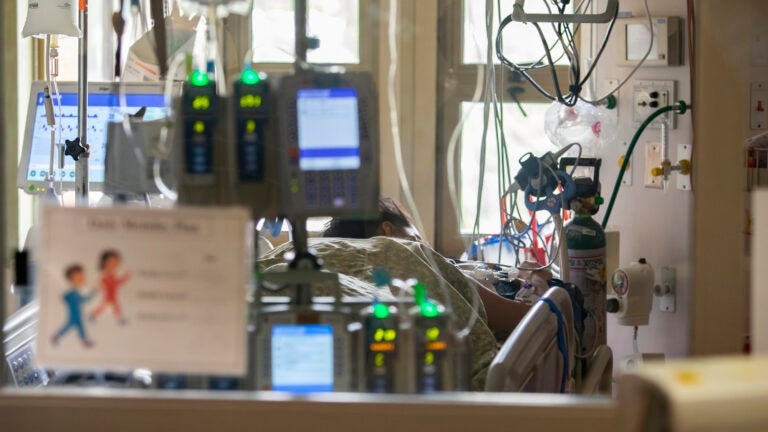COVID
Lungs and placenta bear some similarities, so what the researchers found could have implications for further COVID-19 therapies.
Researchers at Boston University may have figured out why babies born to mothers with COVID-19 are, on the whole, doing “normal baby things” and not catching the virus, said Elizabeth Taglauer, a co-corresponding author of a recently published study.
The secret is in the placenta.
It seems that the placenta is recognizing the infection in the mother’s body and is shedding off an enzyme that is the main receptor for SARS-COV-2, making it less likely that the baby will catch the virus, the researchers found.
Taglauer, an assistant professor of pediatrics at the Boston University School of Medicine and a clinical neonatologist at Boston Medical Center, told Boston.com doctors have noticed throughout the pandemic that babies born to mothers with acute COVID-19 did not seem to be catching the virus.
Being a placental biologist, she had a hunch that the placenta had a role to play, so she and a group of researchers started investigating.
“What we found is that one of the main ways that the virus SARS-COV-2 can enter into cells is through a receptor, or an enzyme called ACE2, and we found that when women had COVID, particularly in their third trimester, the placenta seems to have lower levels of this entry molecule,” Taglauer said.
The study was a collaboration between placental and perinatal researchers at the Boston University School of Medicine; Boston Medical Center; Ke Yuan, a lung vascular biologist at Boston Children’s Hospital; and Dr. Hongpeng Jia, an ACE-2 expert at Johns Hopkins University.
The researchers collected placentas from two groups of women who delivered babies at Boston Medical Center between July 2020 and April 2021. The first group was women who had no report of a COVID-19 infection during pregnancy. The other group was comprised of people who had active COVID-19 disease during pregnancy.
After comparing placental expression of the enzyme in question using genetic and protein analysis techniques, the researchers found that Angiotensin-converting enzyme 2, or ACE2, is decreased in the placenta after acute COVID-19 infection. Conversely, they discovered activity levels of placental ADAM17, an enzyme known to cleave ACE2, were elevated.
With fewer receptors, there is less of an ability for the virus to enter and infect other cells, according to the researchers, according to Taglauer.
Their findings were published in the American Journal of Pathology in January.
Taglauer said the placenta acts as a fetal lung during pregnancy, providing oxygen as well as nutrients to the baby. And it is structured similarly to lung function when we breathe air.
Because of the similarities between lungs and placentas, she said this research has the potential to inform other projects, especially those concerning lungs.
“Something that’s very special and unique about the placenta is that unlike lung tissue, where we can’t study that from human patients while they’re alive, we can study human placentas right after the babies are born,” Taglauer said. “It’s a really special way to hopefully maybe be able to get some answers about COVID.”
With the COVID-19 pandemic marked by so much illness and death, Taglauer said she feels “very honored to be able to see how the placenta is naturally protecting these babies.”
The study had a relatively small sample study and researchers only have very early findings, but Taglauer said she hopes other research can build on their work and possibly lead to a greater understanding about COVID-19 and the lungs.
The researchers also plan to follow up with the patient cohort captured in the study in two years to see how they are responding to other infections and life.
“If we can understand how the placenta is protecting from COVID being transmitted naturally, then if we can use that information and take it to other researchers, they can develop pathways and treatments for helping prevent the virus from getting into other organs, particularly the lungs,” Taglauer said.
Newsletter Signup
Stay up to date on all the latest news from Boston.com









